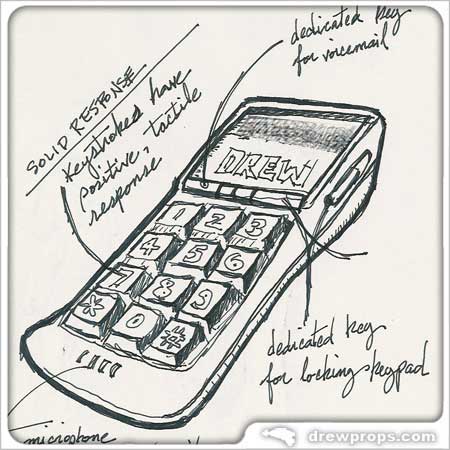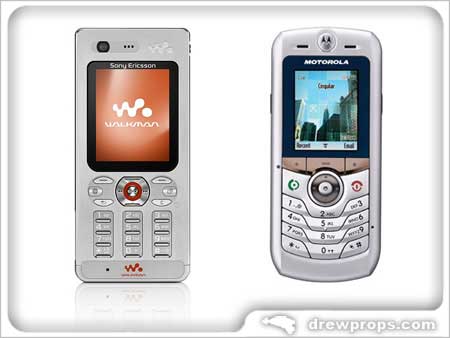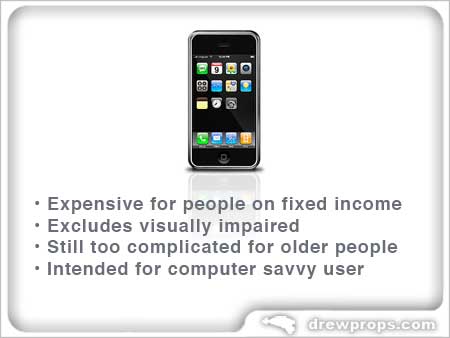 Western culture is driven by youth, something we all hear (and ignore) when we’re young and grow to believe (and resent) as we age. Recently, after watching my 70-something parents struggle with my Dad’s terribly tiny cellphone, I joined that group of people who are calling upon industries across the spectrum to add the over-60 demographic to your product lineups, and fast. While service industries (primarily, pharmaceuticals, healthcare providers and medical equipment suppliers) have spent several years in preparation for the golden years of an aging Baby Boomer generation, it seems that there are precious few consumer-oriented companies who have given it a second thought. Companies like OXO, who are actively looking to reinvent products for people with reduced strength and limited mobility, are few and far between. For evidence of this you need look no farther than your own cellular telephone. Do you even know how to work that thing?
Western culture is driven by youth, something we all hear (and ignore) when we’re young and grow to believe (and resent) as we age. Recently, after watching my 70-something parents struggle with my Dad’s terribly tiny cellphone, I joined that group of people who are calling upon industries across the spectrum to add the over-60 demographic to your product lineups, and fast. While service industries (primarily, pharmaceuticals, healthcare providers and medical equipment suppliers) have spent several years in preparation for the golden years of an aging Baby Boomer generation, it seems that there are precious few consumer-oriented companies who have given it a second thought. Companies like OXO, who are actively looking to reinvent products for people with reduced strength and limited mobility, are few and far between. For evidence of this you need look no farther than your own cellular telephone. Do you even know how to work that thing?
Is the menu ever confusing?
Of course it is, especially if you don’t use it often, which is predominantly the case with older folks. They’ve already learned and forgotten so many systems of doing things they just don’t have the patience or the inclination to learn anything else. T-9 texting or navigating menu settings 5 levels deep in their phone’s operating system just isn’t going to happen. They just want a phone that will hold their contacts, dial easily and hang up in a way that makes sense. And locking the phone shouldn’t require a two-button maneuver, why not simply add a physical sliding “lock” button like you find on iPods? Remember, the visually impaired can’t see a virtual button.
Do you use all the features of your phone?
Do you really? People over 35 don’t do a whole lot of texting or moblogging, forget about people in their 50’s, 60’s and above. Could you comfortably text people with your current phone if you had arthritis? Why not? (this leads me into my next question…)
Have you ever pushed the wrong button on your phone by mistake? Was it because you were confused or was it because the buttons were too small and too close together for your fingers?
Older people need physical buttons. Big ones, especially for the number keys. I’m talking about keys that are exactly the size of the ones you find on laptop computers. They’re big, they’re flat and they provide really responsive feedback. Remember: people of all ages respond to positive, tactile response in mechanical gear and the elder generation was all about the physical world. We do them a disservice by forcing them into this sub-miniaturized, virtual world that so seems like the future right now. Why do you think that Apple kept a simulated version of the “clicking” sound of the iPod’s “wheel” even after they ditched the mechanical wheel from the first generation of that device? Because it reminds us of something mechanical, something we understand at an instinctive level.
Yet the keys on cellphones continue to shrink in size. Note the subminiature keys on the new Sony Ericsson W880i or the confusingly-overlapped, armadillo-like keyshapes of the Motorola L2.

I have a hard enough time with the tiny nubs on my 4 year-old Sony Ericsson T-616, what the hell am I going to do if my next phone has even smaller keys? Who bloody knows if you’ve actually pushed one of those things.
Maybe you don’t have any of these problems. But try to imagine what it’s like to be a sixty-five year old grandmother with failing eyesight, just trying to make a call to your doctor. Or perhaps you’re a 40-something actor fighting a disease like Parkinsons and the fine motor control required to operate the device is beyond you. What are you going to do then?
“Aha!” you say, “What about Apple’s upcoming iPhone? That will solve all those problems!”
Sure it will, for some people. But what about folks on fixed pensions? Are you going to help them buy a $500 phone and the swoopy services that really make it shine? Do they even want those services? No they don’t. They’ll just be happy to have service, to heck with the razzle dazzle that we Mac fans drool over. What if you’re a person who is losing your vision to macular degeneration or diabetes? How are you going to see the iPhone’s virtual keypad? The answer is that you won’t be able to see it.

What about 3G?
What do you think? Why would a 65 year-old care about downloading the latest episode of “Lost” onto a screen 5 times smaller than than the TV they already have a hard time seeing at home in their living room? The average size of cellphone video screens is under 2 inches, miniscule when compared to Apple’s recently announced iPhone, and as previously proposed, if you’re already losing your sight you’d hardly care about vision-taxing features. Besides, you probably couldn’t hear the bloody thing even if you could see it.
So what about it cellular industry? Who’s going to be first to the plate with a big fat phone that’s just meant for calling people? I’m calling it the ElderPhone because it’s something that you only begin to appreciate as you become old enough to know what you like despite the best efforts of popular culture to convince you otherwise. I know a lot of people who’d be all too ready to buy something big, dumb and simple and a slightly smartened version with the same form factor would surprise you with sales.
Has your old pal Drew ever lied to you before?

A postscript to this entry:
I’ll always remember what motivational speaker and disc dockey Greg Smith said about ability and disability in the film “On A Roll”. Smith, who suffers from Muscular Dystrophy, referred to people walking down the street as “temporarily-abled”, which is so true. One day each of those people will find themselves in a position of frailty and reduced capability, whether through age or illness. The truth of that idea is something that should drive our built and designed environment, beyond fashion.
Some great ideas you concieved here and i hope they get heard.
I thought you might be interested in the work of Martin Cooper at Greatcall – now GoJitterBug http://www.gojitterbug.com – for the aged cellphone user that you mention.
Best wishes,
David
I guess I’m now officially “old”, because this is the type of phone that appeals to me. It’s not that I have trouble seeing the small screen. I just don’t need or want a phone that does all that fancy stuff. All I want to do with a cell phone is make and receive calls and have a way to store the numbers I frequently use. I have a camera for taking pictures and I have a computer with a standard size screen for surfing the web.
where do I purchase an “elder cell phone” for my 86 yr. old Dad? one with large buttons and not a lot of “stuff”? Just simple to make calls along the way?
About the only solution I’ve seen so far would be the one that Mr. Doherty posted in his comments just a few comments above…. the GoJitterbug.com website. I’d suggest that you click on over there and see if it looks like something that might work for your Dad. It’s a shame that more manufacturers couldn’t consider usability and generational capability in the design of at least one handset for each of their own lines.
It’s encouraging that a few more companies are now looking to this space:
1) There is a very easy to use Fujitsu phone but it’s only available in Japan with the operator NTT Docomo.
2) Vodafone have produced a “simple” range of handset/service offerings.
3) Austrian company Emporia are producing GSM handsets for the 40+ market. More information at http://www.emporia.at but take my word for it these are really easy to use devices.